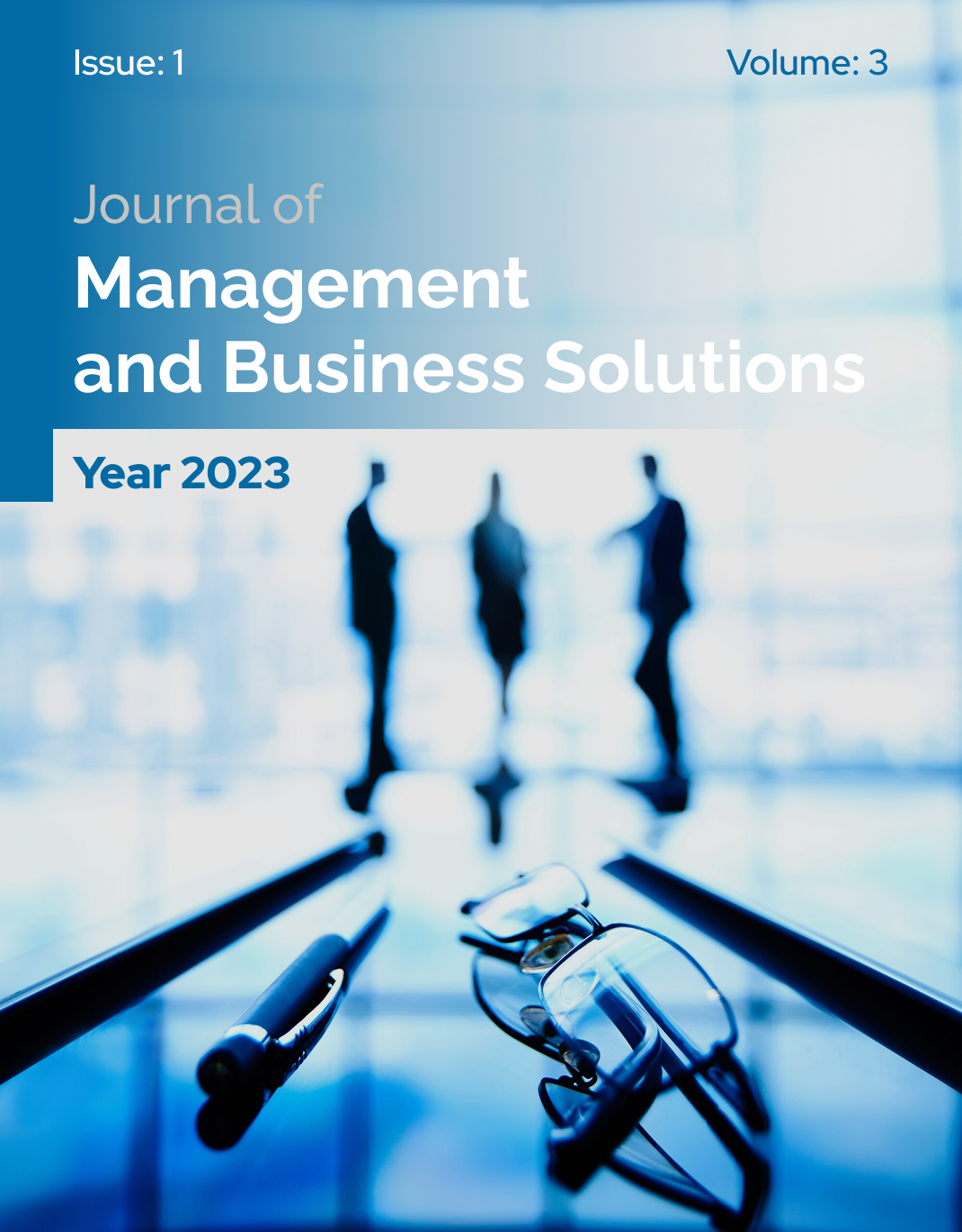Understanding the Influence of Organizational Justice on Employee Motivation in Public Administration
Keywords:
Organizational justice, employee motivation, public administration, qualitative research, procedural fairness, intrinsic motivation, ethical leadershipAbstract
This study aimed to explore how perceptions of organizational justice influence employee motivation in the context of public administration in Tehran. A qualitative research design was employed to gain in-depth insights into the experiences and perceptions of public sector employees regarding fairness and motivation. Data were collected through semi-structured interviews with 17 employees from various public administration offices in Tehran, selected using purposive sampling. Interviews were conducted until theoretical saturation was reached. The data were transcribed verbatim and analyzed using thematic analysis with the assistance of NVivo software, following Braun and Clarke’s six-phase framework. Three main themes emerged from the analysis: perceived organizational justice, impact on motivation, and organizational climate and culture. Subthemes under perceived justice included fair distribution of rewards, transparent procedures, respectful interactions, voice in decision-making, and neutrality of supervisors. Employees described how fairness influenced job satisfaction, engagement, internal motivation, and organizational commitment. Moreover, justice was experienced not only through formal procedures but also within the broader organizational culture, including trust in leadership, inclusion, and shared moral values. Quotations from interviews reinforced the central role of justice in shaping motivational outcomes. Organizational justice functions as a key motivational driver in public administration, especially in contexts where material incentives are limited. Fairness in procedures, interactions, and outcomes not only fosters job satisfaction and engagement but also builds trust, ethical climate, and long-term organizational commitment. These findings highlight the need for justice-oriented managerial practices and ethical leadership in public sector institutions to sustain employee motivation and institutional performance.
Downloads
References
Ambrose, M. L., & Schminke, M. (2009). The role of overall justice judgments in organizational justice research: A test of mediation. Journal of Applied Psychology, 94(2), 491–500. https://doi.org/10.1037/a0013203
Bies, R. J., & Tripp, T. M. (2002). “Hot flashes and open wounds”: Injustice and the tyranny of its consequences. In Greenberg, J. & Cropanzano, R. (Eds.), Advances in organizational justice (pp. 203–221). Stanford University Press.
Cohen-Charash, Y., & Spector, P. E. (2001). The role of justice in organizations: A meta-analysis. Organizational Behavior and Human Decision Processes, 86(2), 278–321. https://doi.org/10.1006/obhd.2001.2958
Colquitt, J. A. (2001). On the dimensionality of organizational justice: A construct validation of a measure. Journal of Applied Psychology, 86(3), 386–400. https://doi.org/10.1037/0021-9010.86.3.386
Colquitt, J. A., Conlon, D. E., Wesson, M. J., Porter, C. O., & Ng, K. Y. (2001). Justice at the millennium: A meta-analytic review of 25 years of organizational justice research. Journal of Applied Psychology, 86(3), 425–445. https://doi.org/10.1037/0021-9010.86.3.425
Cropanzano, R., Byrne, Z. S., Bobocel, D. R., & Rupp, D. E. (2007). Moral virtues, fairness heuristics, social entities, and other denizens of organizational justice. Journal of Vocational Behavior, 71(3), 448–460. https://doi.org/10.1016/j.jvb.2007.06.004
Deci, E. L., & Ryan, R. M. (2000). The “what” and “why” of goal pursuits: Human needs and the self-determination of behavior. Psychological Inquiry, 11(4), 227–268. https://doi.org/10.1207/S15327965PLI1104_01
Fatt, C. K., Khin, E. W. S., & Heng, T. N. (2010). The impact of organizational justice on employee’s job satisfaction: The Malaysian companies perspectives. American Journal of Economics and Business Administration, 2(1), 56–63.
Folger, R., & Cropanzano, R. (1998). Organizational justice and human resource management. SAGE Publications.
Gagné, M., & Deci, E. L. (2005). Self-determination theory and work motivation. Journal of Organizational Behavior, 26(4), 331–362. https://doi.org/10.1002/job.322
Greenberg, J. (1990). Organizational justice: Yesterday, today, and tomorrow. Journal of Management, 16(2), 399–432. https://doi.org/10.1177/014920639001600208
Kim, S. (2005). Factors affecting state government information technology employee turnover intentions. The American Review of Public Administration, 35(2), 137–156. https://doi.org/10.1177/0275074005275305
Kickul, J., Lester, S. W., & Belgio, E. (2004). Attitudinal and behavioral outcomes of psychological contract breach: A cross-cultural comparison of the United States and Hong Kong Chinese. International Journal of Cross Cultural Management, 4(2), 229–252. https://doi.org/10.1177/1470595804044751
Lind, E. A. (2001). Fairness heuristic theory: Justice judgments as pivotal cognitions in organizational relations. In Greenberg, J., & Cropanzano, R. (Eds.), Advances in organizational justice (pp. 56–88). Stanford University Press.
Loi, R., Hang-Yue, N., & Foley, S. (2006). Linking employees’ justice perceptions to organizational commitment and intention to leave: The mediating role of perceived organizational support. Journal of Occupational and Organizational Psychology, 79(1), 101–120. https://doi.org/10.1348/096317905X39657
Moorman, R. H. (1991). Relationship between organizational justice and organizational citizenship behaviors: Do fairness perceptions influence employee citizenship? Journal of Applied Psychology, 76(6), 845–855.
Park, S. M., & Rainey, H. G. (2007). Antecedents, mediators, and consequences of affective, normative, and continuance commitment: Empirical tests of commitment effects in federal agencies. Review of Public Personnel Administration, 27(3), 197–226.
Perry, J. L., & Hondeghem, A. (2008). Motivation in public management: The call of public service. Oxford University Press.
Rawls, J. (2005). A theory of justice (Rev. ed.). Belknap Press.
Tremblay, M. A., Blanchard, C. M., Taylor, S., Pelletier, L. G., & Villeneuve, M. (2010). Work extrinsic and intrinsic motivation scale: Its value for organizational psychology research. Canadian Journal of Behavioural Science, 41(4), 213–226.
Tyler, T. R., & Blader, S. L. (2003). The group engagement model: Procedural justice, social identity, and cooperative behavior. Personality and Social Psychology Review, 7(4), 349–361.
Wright, B. E., & Pandey, S. K. (2010). Transformational leadership in the public sector: Does structure matter? Journal of Public Administration Research and Theory, 20(1), 75–89. https://doi.org/10.1093/jopart/mup003
Downloads
Published
Submitted
Revised
Accepted
Issue
Section
License

This work is licensed under a Creative Commons Attribution-NonCommercial 4.0 International License.

